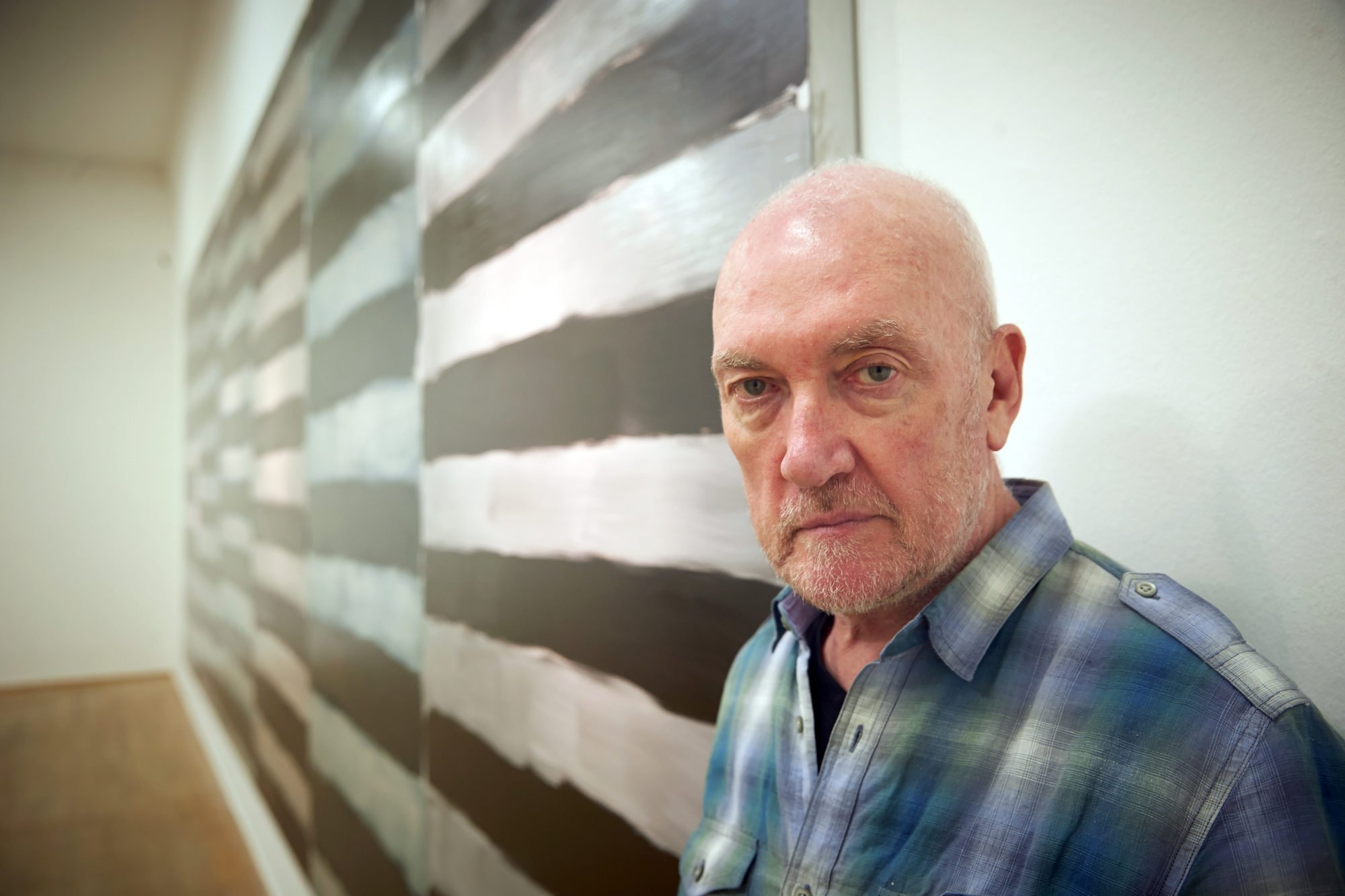
In a Venice Biennale year, artists have to pull out all the stops to make an impression in La Serenissima. But if your solo show is in the historic Basilica of San Giorgio, the pressure to deliver ratchets up a notch.
That’s where Sean Scully’s exhibition will be this May. And beneath Andrea Palladio’s magnificent Renaissance dome, Scully will install Opulent Ascension, his tallest sculpture to date.
But that’s not all. The artist, best known for his large-scale abstract paintings, will also unveil his first Madonna and Child as well as an illuminated manuscript.
The curator of the exhibition, Javier Molins, tells artnet News that Opulent Ascension—which will be more than 32 feet (10 meters) tall and made of layers of multicolored felt—is inspired by an Old Testament story in which Jacob dreams of a ladder leading to heaven. It also draws on related Tim Robbins film from 1990.
In the Bible, “it is about communication between heaven and earth,” Molins says. “For Sean, it is also important because he saw the movie Jacob’s Ladder, which is about the Vietnam War. At the end there is a ladder and [Robbins’s] son is waiting for him.” Molins says that on a personal level, Scully’s tower is a memorial to first son, who died in a car accident when he was only 19.
Sean Scully, Madonna Triptych (one panel of three) (2018). Copyright Sean Scully.
His younger son, Oisin, who is now 10, figures in the artist’s new Madonna Triptych, which brings the artist back to figurative painting. The work is based on photographs Scully took of Oisin playing with his mother, the artist Liliane Tomasko, on a beach in Bahamas. “All of Sean’s works, even the abstract ones, come from reality,” Molins says.
This might sound like a surprising departure for the Irish-born artist, who is known for his abstract work. But as with so much of his art, it is rooted in his childhood in London, where he was raised as a Roman Catholic. He once told the Guardian newspaper that as a boy, the most important people in his life were “Mary, Mother of Jesus, and my pet rabbit. I’d make sculptures of Mary and the rabbit and play games with them.”
Scully’s more familiar abstract sculptures will be installed in the abbey’s garden, while the church itself will present new geometric paintings, some of which are inspired by the luminous colors of Byzantine architecture. Other works refer to Van Gogh’s paintings and Scully’s travels to Arles.
Beyond the high altar there will be a surprise in store. Scully has created his first illuminated manuscript, which is inspired by historic examples from the church’s library. The vellum tome of watercolor drawings on handmade paper includes the artist’s handwritten thoughts.
“We went together to visit the abbey and they showed us their amazing collection. They have three Tintorettos, including a huge Last Supper,” Molins says. “[Scully] was inspired by the manuscripts the monks were making five centuries ago.” On the artist’s return to New York, he started making his own oversize volume, which will be displayed on its own lectern.
Sean Scully, watercolor for Opulent Ascension (2019).
Titled “Human,” the exhibition has been commissioned by the Benedictine monks who run the church. They invited the artist to visit their 16th-century abbey after seeing Scully’s works in a tiny monastery church in Montserrat, near Barcelona.
“The monks from Venice really liked the spirituality of Scully’s work,” Molins says, adding: “He is very excited by the project. It is not a white cube. You have to establish a dialogue with the function of the church and the history of the place.” The curator sees an affinity between Scully, Palladio, and Tintoretto. “They broke the rules. This is what Sean has done his whole career.”
“Human” will be on view from May 11 through October 13 at the Abbey of San Giorgio Maggiore, Venice.